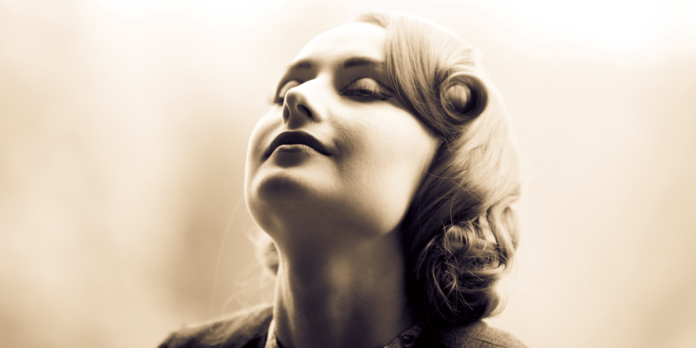
Who were the swans?
The swans were a charmed circle of socialites—women with style, money, connections, and a flare for living well—whom author Truman Capote befriended in the 1950s, ‘60s, and ‘70s. The original swans were Lee Radziwill, Marella Agnelli, Gloria Guinness, C.Z. Guest, Slim Keith, Pamela Harriman, and Babe Paley.
What were the swans like?
During the second half of the 20th century, after old guard notions of class and society had been reshaped by accelerated social and economic change, the swans were at the top of the new social totem pole. They were slender, beautiful, impeccably dressed, and had a penchant for lunching at chic restaurants. Many of them were also infamous for their tangled love lives and affairs.
What did the swans do?
The swans were the ultimate influencers of their time. They were so-called “jet-setters” who enjoyed circulating among the world’s most exciting cities and most exclusive resorts for vacations, cultural expeditions, and shopping sprees. They attended the world’s most glamorous parties and social events, and rubbed elbows with the rich and famous of all fields. The swans were constantly in the public eye, via paparazzi shots and society columns, and their personal lives, including tragedies and heartbreaks, were often the subject of intense scrutiny.
What was the connection between Truman and the swans?
The swans prized Truman for his good company and sparkling conversation—at least until his growing alcohol and drug use dissolved much of the sparkle. And Truman, as both a writer and someone dazzled by high society, was fascinated with the swans’ privileged lifestyles and their personal stories. In fact, Truman sometimes used his swans as inspirations for his writing. He scandalously included several of their foibles and secrets, barely disguised, in the published excerpts of his unfinished, tell-all book, Answered Prayers, which terminated the friendship between Truman and many of his social set, including swans.
How did the swans influence fashion?
The swans were celebrated as style icons. Their signature looks often included expensive haute couture fashion and accessories, which set the standard for good taste in their era. The swans were regularly featured on “Best Dressed” lists and in fashion magazines, and many of them had close relationships with the creative geniuses who designed their clothing and hair styles, and the interiors of their numerous homes.
What is the swans’ legacy?
The swans are sometimes said to have been the last of a kind: women of what used to be called “class” and “breeding,” who made as gracious a show of privilege as they could in a rapidly evolving modern society. In today’s strident era of “real housewives,” affluent, style-obsessed women are no longer quite the golden celebrities that Truman’s swans were. His swans have left a lasting impact on popular culture, and are still referenced in books, movies, and TV shows as symbols of true glamour and sophistication.
What happened to the swans?
Sadly, several of the swans were heavy smokers and died of lung cancer. Babe Paley died of the disease in 1978, as did Slim Keith in 1990 and C.Z. Guest in 2003. Gloria Guinness died of breast cancer in 1980; Pamela Harriman died of a cerebral hemorrhage in 1997; and Lee Radziwill and Marella Agnelli died in 2019 of natural causes and complications of Parkinson’s disease, respectively. Truman Capote died in 1984, of liver disease complicated by phlebitis and a history of drug and alcohol abuse.
~~~~~

Reveling in the star-studded parties, fashionable restaurants and gilt-edged inner circles of its most exclusive events, Truman Capote and his flock of glamorous socialite “swans” rule the highest echelons of 1960s and 70s high society New York. Stephen Greco brings this scandalous world to life in a fascinating recreation of the tumultuous friendship between Capote and his most elegant yet unconventional swan: princess and sister of Jackie Kennedy, Her Serene Highness Lee Radziwill.
“Fans of Capote and the era of Camelot should be delighted.” —Shana Abé, New York Times bestselling author of The Second Mrs. Astor
On a Thursday morning in May 1961, a well-mannered twenty-one-year-old named Marlene enters the Fifth Avenue apartment of Lee Radziwill to interview for the position of housekeeper and cook. The stylish wife of London-based Prince Stanislaw Radziwill, Princess Lee is intelligent and creative, with ambitions beyond simply jet-setting. But to the public, she is always First Lady Jackie Kennedy’s little sister.
As Marlene becomes a trusted presence in the Radziwill household, she observes the dazzling array of famous figures who flit in and out of Lee’s intimate circle, including Gloria Vanderbilt, Rudolf Nureyev, Jackie and the President, Ari Onassis, Gore Vidal, Andy Warhol, and, most regularly, celebrated author Truman Capote. At the height of his fame following the success of Breakfast at Tiffany’s, Truman has granted Lee place of honor in his flock of glamorous socialite “swans.”
Their closeness stems from an unexpected kinship. Both know too well the feeling of being second-best. Seeing his shadow in the woman he refers to as his most unconventional swan, Truman uses his influence and talent to try and make Lee a star.
Their bond deepens through the decade’s extraordinary events, from JFK’s assassination to the era-defining Black and White Ball. But Marlene, who Truman has taken under his wing as an aspiring writer, can see Truman’s darker side—especially his penchant for mining his friends’ private lives for material. And there are betrayals on either side that may signal the end not just of a friendship, but of the shared expectation that wealth and fame can shield against every heartbreak.






